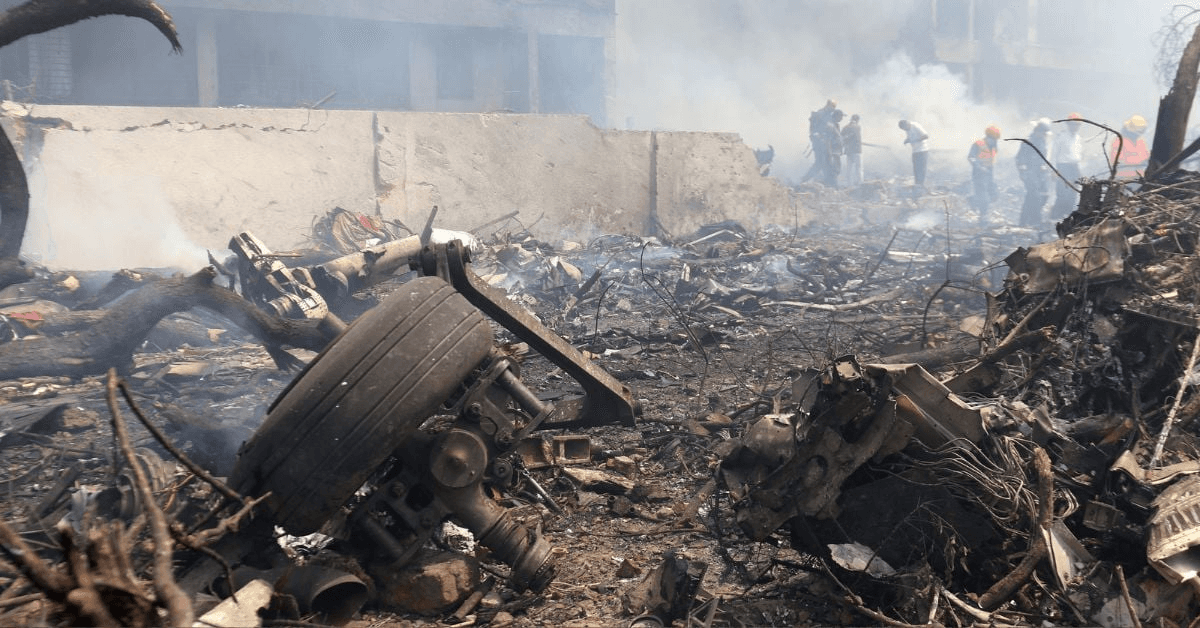 With the crash of Air India Flight 171, the Dreamliner tragedy left us all asking one thing:
With the crash of Air India Flight 171, the Dreamliner tragedy left us all asking one thing:
Who’s to blame?
To answer that, let’s break down how everyone involved had a part to play in what happened.
---
Boeing’s Role
Boeing hasn’t exactly built a reputation for reliability over the last 25 years. Here are just a few examples of past failures that reflect a concerning pattern:
🛬 Lion Air 610 & Ethiopian Airlines 302 (2018–2019)
Both involved the Boeing 737 MAX 8 and crashed due to a faulty software system called MCAS. It was triggered by one sensor and forced the aircraft to nosedive. Boeing never told pilots about it, pushed the FAA to speed up approval, and hid key safety information. This wasn’t a glitch — it was the result of rushed production and corporate negligence, causing the deaths of 346 people.
🛬 Jeju Air 2216 (2024)
This crash brought attention to Boeing’s habit of recycling old aircraft designs instead of building better, safer ones. The 737-800 suffered from sensor and approach issues that experts had warned about for years. But Boeing chose quick updates over serious redesigns, proving once again that cost-cutting came before safety.
🛬 Korean Air 189 (2024)
Another 737 MAX 8 lost cabin pressure mid-air — a problem Boeing still hadn’t fully fixed after the MAX was grounded globally. Their focus remained on getting the aircraft flying again fast, without fully solving the issues that caused previous crashes.
🛬 Southwest Airlines 746 (2024)
This flight experienced a dangerous “Dutch roll” because of issues with a decades-old rudder system Boeing continues to use. Experts had been warning for years that it needed replacing, but Boeing chose to reuse old tech in a so-called “modern” aircraft, putting lives at risk.
---
Air India’s Mistakes
Flight 171 was already flagged for a full systems check a week before the crash — but that inspection was pushed back with no proper reason. Multiple electrical issues, including strange power surges and software resets, had been reported in the weeks leading up to the crash. All of them were dismissed with vague notes like “no fault found.” No extra testing was done. No parts were replaced. And yet, the plane kept flying.
Then came a video recorded by passengers weeks before the crash. It showed the cabin in terrible condition — broken seats, leaking AC, faulty overhead bins, and poor temperature control. Air India brushed this off as “minor” wear and tear. But if they couldn’t be bothered to fix what passengers can see, what does that say about the parts of the plane no one sees?
Maintenance logs even showed repeated technical issues over two months, and still, no real repairs were made. The aircraft was flying on paper — cleared by documents, not by actual safety.
The pressure to avoid delays made it even worse. Engineers were reportedly told to “let it fly” and ask pilots to log problems as in-flight events instead of ground issues — just so the plane wouldn’t be delayed for inspection. The system didn’t prioritize safety. It prioritized performance stats.
---
The Media and the Industry
As usual, when disaster struck, the first response was to blame the pilots. News outlets jumped on the idea of pilot error — “possible miscalculation,” “confusion in the cockpit.” A familiar trick. It’s easier to blame people who can’t speak for themselves. Dead pilots don’t argue back, don’t sue, and blaming them speeds up insurance claims.
Air India, naturally, didn’t correct the media. Why would they? Letting people believe it was the crew’s fault was much easier than explaining why a faulty aircraft was cleared to fly.
Then came the footage recorded by locals — showing the plane struggling right after takeoff, with landing gear still down and the engines visibly underperforming. No dramatic maneuvers. No recklessness. Just a plane failing to climb — because it shouldn’t have taken off in the first place.
But by then, the media had moved on, the public had made up its mind, and the real reasons were buried under headlines and silence.
The truth? The pilots didn’t crash the plane. The plane was already broken. They were just asked to make the impossible work.
---
So, Who's Really to Blame?
In a crash like this, there’s no single villain. There’s a chain of small failures — Boeing’s poor design choices, Air India’s weak maintenance practices, engineering teams forced to cut corners, and a media industry that reaches for the simplest answer.
While investigations are still ongoing and no final conclusion can be drawn yet, one thing is clear: this wasn’t just an accident — it was a collision of corporate failure, poor oversight, misaligned priorities, and bad luck all coming together.
Sometimes, it’s not just one person or company.
Sometimes, the stars simply misalign — and no one steps in to stop it.
Written by Aaryan Majumdar


